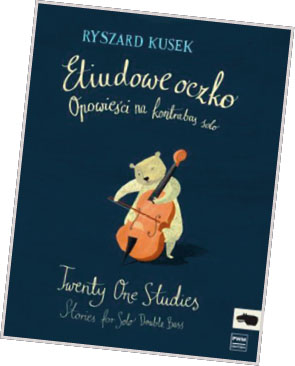
Cello Styles: 14 easy pieces
Daniel Kemminer, Schott Student Editions SE1035
This is a musically attractive collection of engaging pieces covering a range of styles from around the world. I find the title somewhat misleading as, despite the pieces being largely in lower positions, they actually require a fairly sophisticated level of technical development to be able to deliver them effectively. The pieces could offer an initial opportunity to explore some more advanced techniques – and position and extension work – with more elementary players. It is also interesting that the publishers have specified ‘first position’ when in fact there are a number of shifts to multiple positions. At times there are even quite challenging extended hand positions, which may be suitable for more developed players, but would likely prove challenging to players who are new to these techniques.
Where I could see this book being particularly useful is with teenagers who would enjoy the interesting musical content – especially ones who have a wider musical background. Such students would be able to approach the broad range of musical and technical concepts presented, and could be taught to explore their technical abilities further through an interesting range of musical ideas.
The pieces are instantly musically appealing, so much so that hopefully an aural approach to learning would override some of the technical challenges presented. ‘Home Sweet Home’ has a pop ballad feel, with the cellist enjoying singing melodic lines and syncopations. ‘Très cool’ offers the opportunity to explore jazz- and funk-style pizzicato bass lines. ‘Parno i kalo’ (meaning ‘light and dark’ in the language of the Romani) offers great drama and encourages expressive playing by the cellist. The Hebrew ‘Ya-fe po’ offers a chance to explore different hand positions, including a useful half-position passage – grace notes are also explored effectively here.
My personal favourites are ‘Not in this world’, a ballad using interesting double-stops, and ‘Cante y toque’, a flamenco-style piece using different techniques including col legno and pizzicato. There's also a nod towards heavy metal cello, inspired by the band Apocalyptica, with ‘Strings of steel’. The grand finale, ‘Phoenix from the ashes’, feels like film-score music and will certainly inspire strong, majestic playing.
It is great that MP3 play-along tracks are available for this from the Schott website, but it is a pity that they didn't include a CD with the book. The piano parts are very enjoyable to play and are well written. They are accessible to pianists of moderate abilities. Teachers using this book must note that the accompaniments are essential to make these pieces work, so they may wish to encourage the student to download the accompaniment tracks to help their practice at home.
Twenty-one Studies: Stories for double bass
Ryszard Kusek, PWM Edition PWM11628

It is unusual to find a book of studies for young bass players with such evocative titles. Surely this alone will immediately make these of more interest to young students than many of the existing, more traditionally presented study books. Each title is set as an open question, which the author notes is addressed not only to the student, but also to the teacher and probably to the parent as well. The motivation behind this is to encourage imaginative learning and to foster the development of sensitivity.
The collection opens with a study titled ‘What do you see, what do you hear and what do you feel when you're playing?’. This uses simple first-position notes, mainly on the G and D strings, with just a couple of lower notes put into the mix. The student is encouraged to use sensitive dynamic shaping and articulation, such as accents, to shape the sounds. In ‘What are the summer holidays like?’, the rhythms are a mixture of quavers and crotchets, allowing for good development of bow use, with various articulations and some slurs. Here, a few simple harmonics are also introduced.
As the book progresses, some higher-range playing is introduced, along with some reading in tenor clef. ‘Do you have an interesting idea?’ features passages that go into thumb position. Additionally, there are some interesting double-stops to be found in the pieces ‘Where does that road lead?’ and ‘How would you sum up your work so far?’.
Fingerings are printed in appropriate measure, although some of these would be open to other possibilities in technical terms, particularly in the choices of approaches to fingerings around the octave harmonic and the semitone below. Personally, if I was using this resource with my students, I might be inclined to use some different fingering options here.
This is a book I will be very interested to try out with suitable students and I would encourage others to do the same. It is clear that Kusek is an experienced double bass teacher who cares about making the process of learning fun and enjoyable for his students, while introducing them to serious technical points in a balanced and enjoyable way. These pieces could be used with students across several grades with useful outcomes at different stages of the learning process. A great addition to the repertoire.




